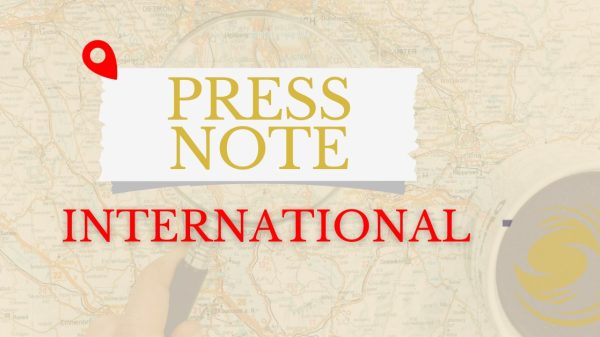Bangladesh-Pakistan Deepening Relations: A Cost-Benefit Analysis

- Update Time : Tuesday, April 22, 2025

A Relationship Rekindled—or Just a Continuation?
It is being said that, after fifteen years, Bangladesh and Pakistan are renewing their relations. But the reality suggests otherwise. Over the past fifteen years, there has been a form of “mango diplomacy” between Bangladesh and Pakistan, much like that with India. On the eve of the then Bangladeshi Prime Minister’s visit to India, Pakistan’s Prime Minister Imran Khan would call her. Again, during the celebration of Bangladesh’s 50th year of independence, immediately after Indian Prime Minister Narendra Modi’s speech, a virtual message of goodwill from Pakistan’s Prime Minister was aired—followed by a message from the President of the United States.
Signals of a New Chapter
Despite this, both Bangladesh and Pakistan claim that their frozen relationship over the past fifteen years is now entering a new phase. The first tangible indication of this came earlier this month, at the foreign secretary-level meeting held on April 18 ahead of Pakistan’s Foreign Minister’s visit. The key issues discussed were connectivity via sea and air (since there are no opportunities for land connectivity between the two), and strategic partnership. Sea connectivity has already commenced, and physical cargo inspections along this route have been abolished. As for air connectivity, the procedures remain unclear. The scope of strategic partnership, however, is vast.
Trade Realities and Regional Dynamics

What could be the regional and global implications of this evolving relationship between Pakistan and Bangladesh? Bangladesh shares the fifth-longest land border in the world with India, stretching 4,096 kilometers. Bilateral trade between the two countries is approximately USD 13.1 billion, with Bangladesh exporting USD 2.13 billion. The United States is Bangladesh’s top export destination (USD 9.7 billion), and India ranks seventh. Among Asian countries, India is the largest importer of Bangladeshi goods.
Cooling of Bangladesh-India Relations
Before the current interim government took office, India enjoyed the warmest relations with Bangladesh in South Asia. However, the current state of Bangladesh-India relations is colder than it has ever been in Bangladesh’s 55-year history. Before and after the interim administration took over, some unexpected comments from Indian security and border authorities, as well as social media posts, caused concern. In response, India expressed worry at the highest levels about the safety of minorities in Bangladesh—especially Hindus, Buddhists, and Christians. This difference in opinion remains unresolved.
Missed Opportunities with India
Even so, reliable sources say that the interim government attempted several times to arrange a bilateral meeting between Muhammad Yunus and Indian Prime Minister Modi. Eventually, the Indian side indicated that such formal meetings would have to wait until after the next elected government takes office. A sideline meeting was tentatively planned for the upcoming BIMSTEC summit. However, two days before the summit, Bangladesh was dropped from the list of countries scheduled for bilateral talks with the Indian Prime Minister. According to Indian diplomatic and political circles, this was because the Chief Advisor of Bangladesh made remarks about India’s regional maritime zones while attending a private business forum in China. Nonetheless, Bangladesh did not back down and pushed through to hold a last-minute sideline meeting.

Differing Narratives on the Same Meeting
The content and interpretation of the meeting differed in both countries. India’s briefing was delivered by a senior diplomat—the Foreign Secretary—while Bangladesh’s was presented by a press secretary appointed from journalism (not a career diplomat). Based on this briefing and a related social media post, India’s Ministry of External Affairs felt compelled to issue an official statement. The daily Prothom Alo, in an editorial column, stated that the meeting had not thawed the frozen relations between the two nations.
Pakistan’s Global Image Problem
Bangladesh’s closest neighbor in South Asia—India—is the world’s fifth-largest economy, with a GDP of USD 4.27 trillion. In contrast, Pakistan ranks 44th, with a GDP of only USD 374.6 billion. According to the World Bank, Pakistan’s growth in the fiscal year 2025 might reach at most 2.6%. Regardless of its economic standing, Pakistan is most widely known for terrorism. According to the South Asian Terrorism Portal (SATP), Pakistan has 80 banned terrorist organizations, with 45 of them currently active.
Terror Networks and a Fragile Political Landscape
At a time when relations between Bangladesh and Pakistan are warming, international media outlets like The New York Times and The Guardian have repeatedly reported—with evidence—that in the political vacuum and weakening governance in Bangladesh, terrorist groups are becoming more active. This is a relatively new and alarming development. Groups like Harkat-ul-Jihad and Hizb ut-Tahrir, similar to those in Pakistan, are now openly organizing rallies and promoting their agendas in Bangladesh, aiming to establish an alternative regime.

Security Risks of Growing Connectivity
In such a situation, the unimpeded sea connectivity and the prospect of increasing air connectivity between Pakistan and Bangladesh raise the question of whether this will help or harm Bangladesh’s relationship with India—its long-border neighbor. India has consistently identified Pakistan as a terrorist state in international forums, and its stance remains unchanged. Moreover, terrorism experts have documented that China’s Uyghur Muslims have also received training from Pakistani terrorist groups. Several perpetrators of terrorist attacks in Sweden and Mumbai were reportedly trained in Pakistan.
China’s Dual Role: Strategic Partner and Cautious Actor
China’s own actions suggest that even it is concerned about terrorism in Pakistan. While China has developed the Gwadar Deep Sea Port in Pakistan, it remains under the control of Chinese security forces. A simple analysis also reveals that China’s engagement with Bangladesh over the past fifteen years—building infrastructure and supporting economic growth—has not been replicated in Pakistan. This is because China considers Pakistan a strategic asset, not an economic partner. The main reason: terrorism. While not as vocal as India, the US, or Europe, China is highly strategic about counter-terrorism, both domestically and internationally.
The Siliguri Corridor and Strategic Concerns
Furthermore, in the context of strategic partnerships, security becomes a critical issue. According to long-held views, India’s Siliguri region in West Bengal connects to Bangladesh via a 22-kilometer-wide corridor, which is considered a military-strategic zone—akin to the 65-kilometer Suwalki Gap between Poland and Lithuania. Europe once feared that this gap would be vulnerable in the Russia-Ukraine war. In reality, though, sea routes and maritime strategic points proved more vital in that conflict, and Russia did not use the gap strategically.
From Military Wars to Economic Battlefields

Above all, the world is now entrenched in a form of economic warfare, in which China plays a leading role. To advance China’s economy in Asia, India remains one of its key competitors—and simultaneously, a partner to the United States in countering Chinese influence. In today’s tech-driven world, military warfare is increasingly outdated in the face of economic conflict.
Bangladesh Must Navigate with Caution
Rather than military threats, countries like India, China, and the US are likely to be more concerned about whether the growing Bangladesh-Pakistan connectivity and strategic partnership could fuel further terrorism within Bangladesh. Such terrorism would be a threat to the internal security of all nations.
Therefore, if Bangladesh intends to deepen its relationship with Pakistan, it must also carefully consider how its larger neighbors and global powers perceive this move.
Tit-for-Tat and the Threat of Terror Branding
Already, a tit-for-tat dynamic has emerged between India and Bangladesh over minor economic disputes—India has halted land shipments from Bangladesh, and in return, Bangladesh has stopped importing yarn and some other goods via the land border. No one can say how far this trade war will go. Bangladesh must remain cautious so that it doesn’t end up with a “terrorist” label—such branding could cause rapid damage during a trade war.
Author: National Award-winning journalist, Editor of Sarakhon and The Present World









Leave a Reply